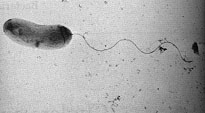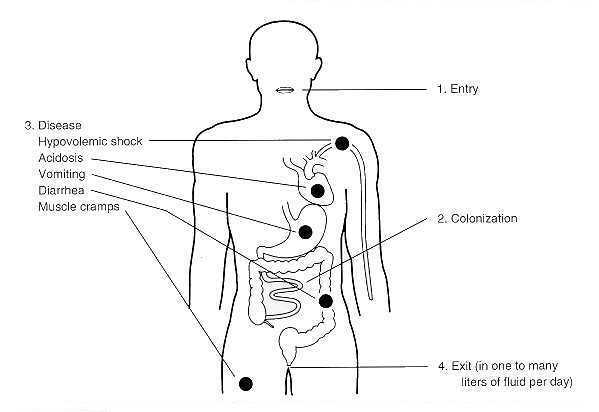by Fabiana Yu


V. cholerae serotype O1 was the main cause of epidemic cholera, as believed in 1992. That same year, the bacterium's serogroup O139 was recognized as the main cause for large outbreaks of cholera in India and Bangladesh. Two years later, approximately 358,000 cholera cases were reported. No major outbreaks have been caused by V. cholerae O139 since 1994, but threat of such happening still exists, especially in Asia.
This disease tends to become epidemic under conditions of poor sanitation, crowding, war, and famine. Outbreaks of cholera have occurred in India, Asia, Africa, the Mediterranean, South and Central America, Mexico, and the US. This, in turn, puts those traveling to foreign countries at much danger.
Yet the disease itself is rarely spread by person-to-person contact. Since its incubation period ranges from six hours to five days and the bacterium stays in excrement for seven to fourteen days, the victims who don't demonstrate the symptoms still carry V. cholerae, and can spread the disease from place to place. By consuming contaminated food, including raw or uncooked seafood from warm coastal waters prone to sewage contamination, or tainted water can infect someone. This food and water is contaminated by the fecal waste of an already infected person; mostly found in countries with lacking water supply and indecent sewage disposal. V. cholerae is also found in Marine animals and shellfish. It is detectable in human blood and stool samples.

Many vital fluids are lost through diarrhea, resulting in severe and rapid dehydration, which can lead to death. Thankfully, about 90% of victims do not develop typical cholera with severe dehydration. The majority of victims, if given a solution of dehydration salts orally, can be treated. In more severe cases of dehydration, fluids are replaced through the intravenous route. Antibiotics are also given in severe cases to lower the amount and length of the diarrhea and vibrio excretion. Tetracycline is the favored choice, as it may lessen the symptom span, though usually not prescribed for children until all permanent teeth are grown. Other effective antibiotics include cotrimoxazole, erythromycin, doxycycline, chloramphenicol, and furazolidone. A cholera vaccine is available and can be recommended for travelers to foreign countries with cholera for temporary, limited protection. Offering only partial protection of 50%, the vaccine is only effective for three to six months and must therefore be given every increment within those months to prevent infection.
The spread of V. cholera between society can be prevented by sanitation: better hygienic disposal of human excretions, good food hygiene, and safe drinking water. Maybe with such precautions, the 1 out of 1000,000 ratio of infected victims will rise to a higher number.
Works Cited:
http://www.ncgr.org./microbe/vibriotxt.html
http://www.who.int/emc/outbreak_news/n1998/sept/n22sept1998.html
Return to Bacterial Disease Page